Introduction to Childhood Respiratory Symptoms
Coughing and wheezing are common respiratory symptoms in children and often signify minor illnesses such as colds. While most cases are mild and manageable at home, these symptoms can sometimes indicate more serious conditions requiring medical attention. This article aims to provide parents and caregivers with a comprehensive understanding of causes, signs of concern, and practical management techniques to ensure optimal respiratory health for their children.
Common Causes and Symptoms of Coughs and Wheezing in Children
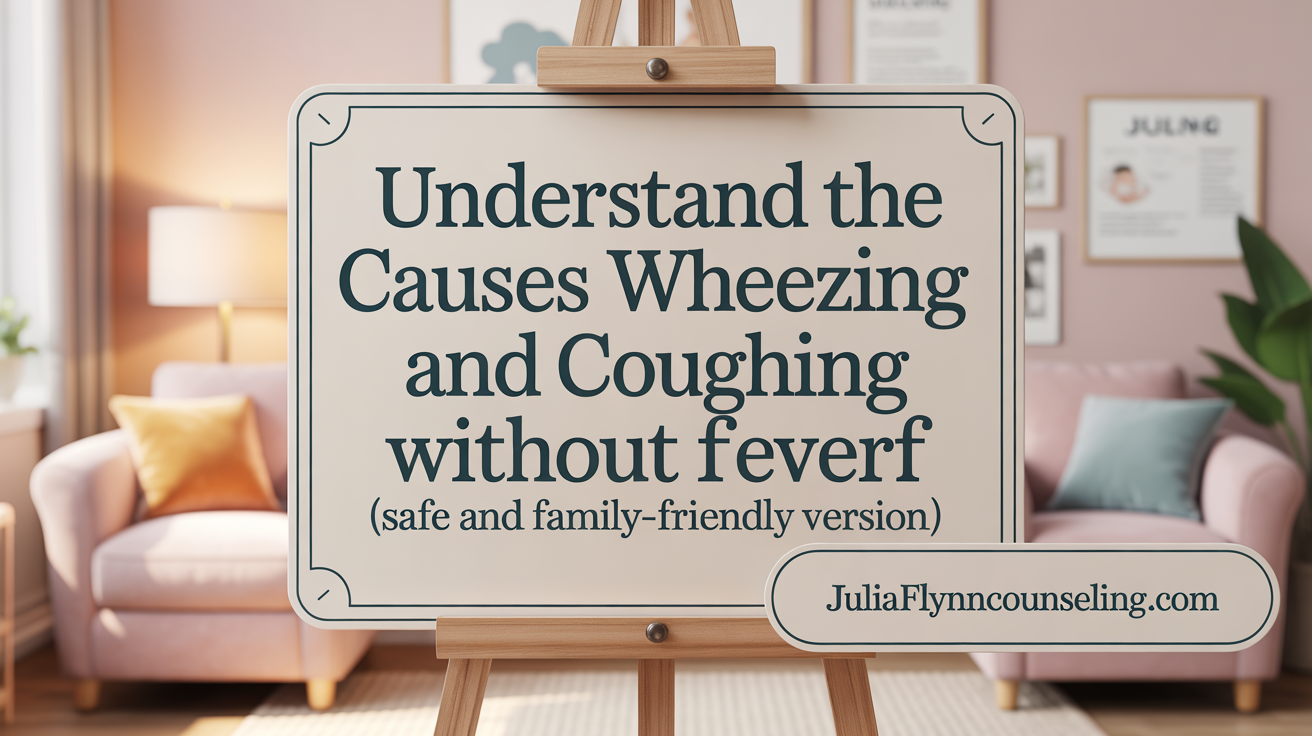
What causes wheezing and coughing in children without a fever?
Wheezing and coughing in children without an accompanying fever are often caused by conditions that involve airway narrowing or irritation rather than infection. Common culprits include asthma, allergies, and exposure to environmental irritants such as cigarette smoke or pollution.
Asthma, a chronic condition, leads to inflammation and swelling of the airways, making breathing difficult and causing wheezing, especially during exhalation. Allergic reactions to pollen, dust mites, pet dander, or mold can also trigger airway inflammation without fever.
Other factors include exposure to cold air or physical activity, which may provoke airway constriction or increase mucus production. Viral infections like RSV or the common cold might cause wheezing even if the child does not have a fever, especially in infants and young children whose airways are narrower.
Additionally, reflux of stomach acid into the esophagus (gastroesophageal reflux) can irritate the airway, leading to cough and wheezing. Sometimes, a foreign object lodged in the airway causes persistent coughing and wheezing without fever.
Understanding these causes helps in managing symptoms appropriately. If a child has ongoing or worsening wheezing or cough, even without fever, consulting a healthcare provider ensures proper diagnosis and treatment.
Recognizing When to Seek Urgent Medical Attention
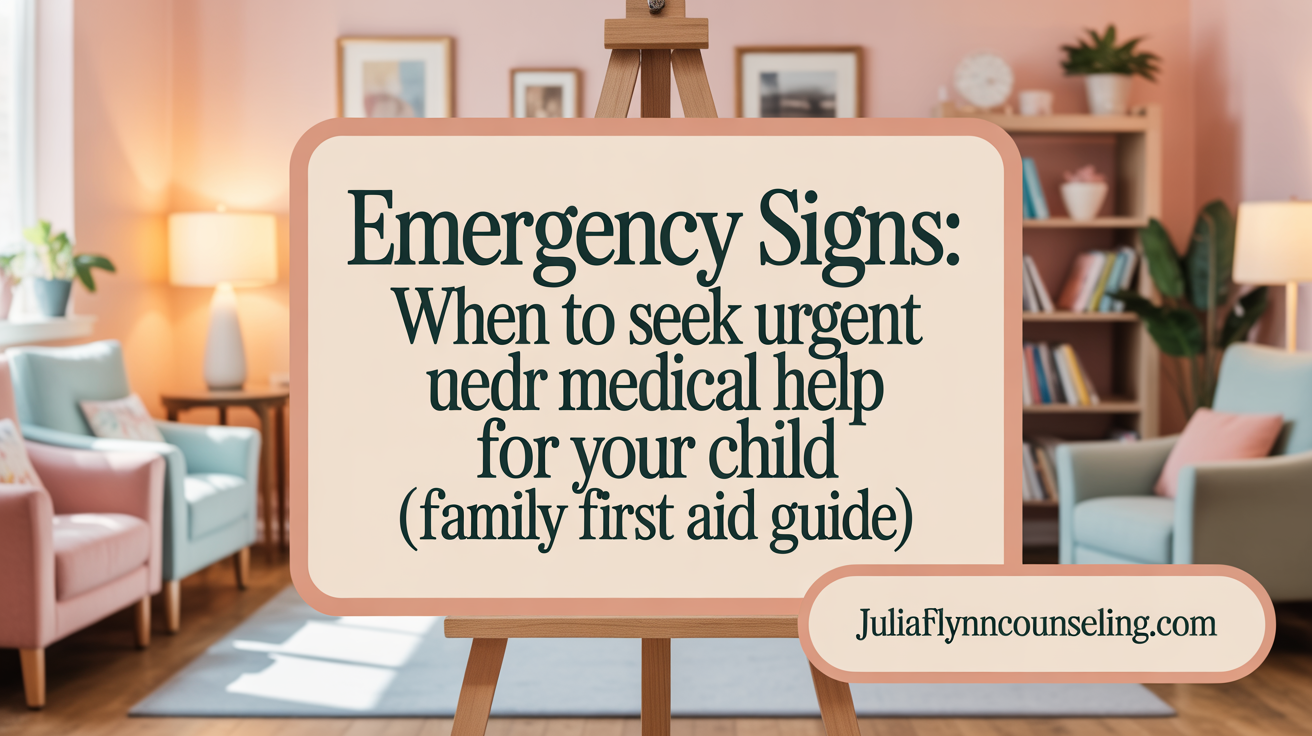
How can parents recognize when a child’s wheezing or coughing needs urgent medical attention?
Parents must be vigilant for signs indicating severe breathing difficulties in their children. Urgent symptoms include trouble breathing that worsens quickly, rapid or irregular breathing, and the use of extra muscles such as nasal flaring or chest retractions, where the chest pulls inward during inhalation.
Stridor, a harsh, high-pitched sound during inhalation, or wheezing that is loud and persistent, also signal distress. Bluish skin, lips, or face points to low oxygen levels and requires immediate medical care.
Children who are overly tired, unusually lethargic, or unable to speak or cry effectively should be assessed urgently. A significantly increased breathing rate—above age-specific normal ranges—along with signs of fatigue, indicates that the child is struggling to breathe.
In these situations, calling emergency services without delay is vital. Early medical intervention can prevent respiratory failure and ensure the child receives appropriate treatment. Parents should not wait for symptoms to worsen and should seek help promptly if any of these warning signs appear.
Understanding these danger signs allows caregivers to act swiftly, safeguarding the child's health during respiratory illnesses.
| Symptom or Sign | Description | Urgency for Medical Attention |
|---|---|---|
| Difficulty breathing | Struggling, gasping, or labored breaths | Immediate |
| Rapid breathing | Breathing rate exceeds age limits | Immediate |
| Chest retractions | Ribs pulling in during inhalation | Immediate |
| Nasal flaring | Nostrils widen with each breath | Immediate |
| Cyanosis | Bluish discoloration of skin/lips | Immediate |
| Lethargy or unconsciousness | Decreased responsiveness | Immediate |
| Inability to speak or cry | Weak or silent breathing effort | Immediate |
This table summarizes the critical signs indicating that a child needs urgent medical care. Recognizing these indicators early ensures timely intervention and better outcomes.
Understanding Specific Childhood Respiratory Conditions: Asthma, Bronchiolitis, Croup, and Whooping Cough
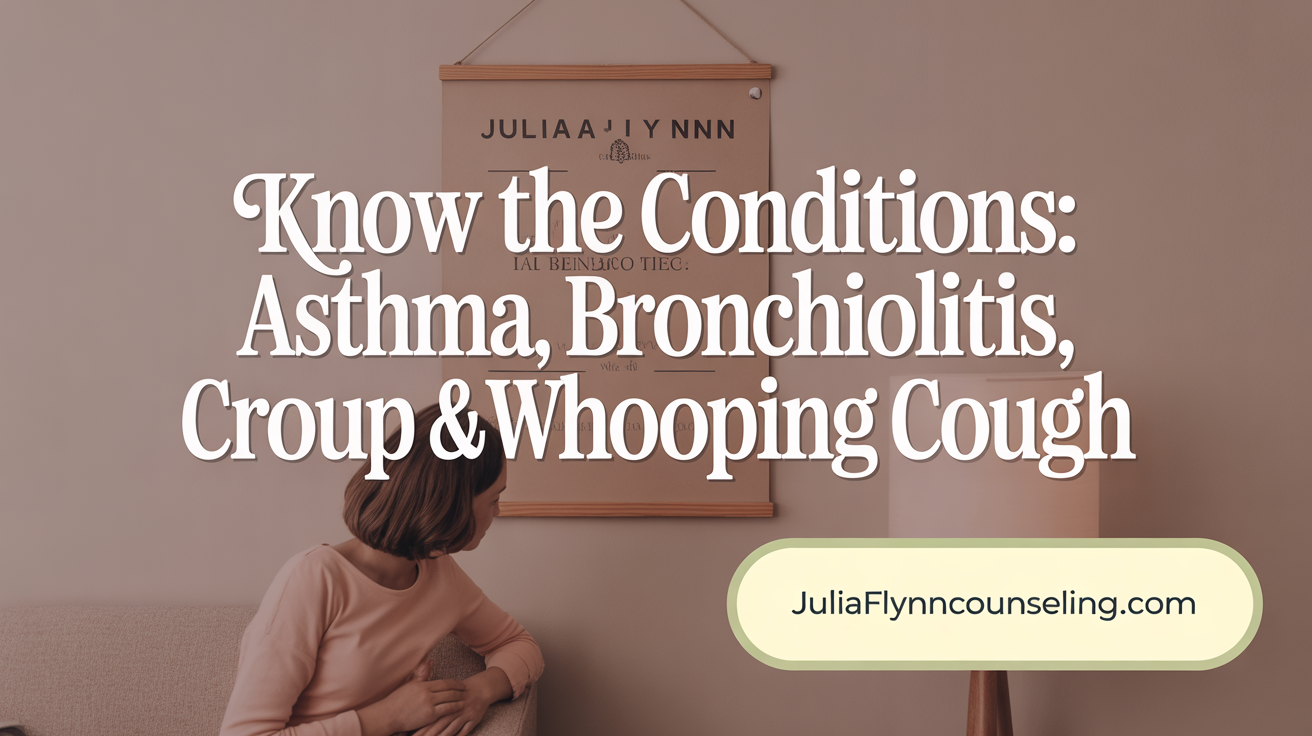
Characteristics of asthma including triggers and symptoms
Childhood asthma is a chronic condition where the airways become inflamed and more sensitive to various triggers. Common features include wheezing, a whistling sound during exhalation, persistent coughing, chest tightness, and shortness of breath. Triggers often include respiratory infections, exposure to allergens such as pollen, dust mites, pet dander, and mold, as well as physical activity, cold air, and air pollution.
Symptoms tend to worsen during viral infections, at night, or after exposure to cold weather. Severe attacks can lead to difficulty speaking, rapid breathing, and visible effort to breathe, requiring immediate medical care. Management involves controlling environmental triggers, using inhaled corticosteroids for long-term control, and quick-relief inhalers during attacks.
Bronchiolitis caused by RSV and its impact on infants
Bronchiolitis primarily affects children under 2 years old and is caused mainly by the Respiratory Syncytial Virus (RSV). It causes swelling and inflammation of the small bronchioles, leading to symptoms like wheezing, cough, nasal congestion, rapid breathing, and sometimes fever. Infants may show signs of difficulty feeding, dehydration, and in severe cases, require hospitalization.
Most cases resolve within a week with supportive care such as humidified air, nasal saline drops, hydration, and fever management. Certain high-risk infants, including preterm babies or those with underlying lung or heart conditions, may need special medications or additional monitoring. Good hygiene and avoiding sick contacts are essential for prevention.
Features of viral croup and its typical presentation
Croup is characterized by a barking, brassy cough, hoarseness, and inspiratory stridor— a high-pitched noise during inhalation due to swelling in the upper airways. It mainly affects children under 3 years old and is caused by viral infections like parainfluenza, influenza, or RSV.
Symptoms are often worse at night and may be accompanied by a low-grade fever and respiratory distress, such as nasal flaring and chest retractions. Mild cases can be managed at home with humidified air and comfort measures, while more severe cases might require corticosteroids or hospitalization. Croup is contagious and spreads through respiratory droplets.
Whooping cough (pertussis) symptoms and contagion
Pertussis, or whooping cough, is caused by Bordetella pertussis bacteria. It presents with spells of intense coughing, often ending with a characteristic 'whooping' sound as the child gasps for breath. Other signs include a runny nose, low-grade fever, fatigue, vomiting after coughing, and apnea in infants.
It is highly contagious, spreading via respiratory droplets, most infectious during early cough stages and for about two weeks afterward. Pertussis can last for 2 to 3 months and is preventable through vaccination. Antibiotics can lessen contagiousness and severity, and early diagnosis is crucial to avoid complications.
Differential diagnosis considerations for persistent coughs
Persistent coughs lasting more than 3 weeks can be caused by asthma, allergies, sinus infections, or deliberate habits. Other possibilities include chronic infections like tuberculosis, bronchiectasis, or conditions like gastroesophageal reflux. Detailed history, physical examination, and targeted investigations such as chest X-ray, allergy testing, or microbiological tests help identify the underlying cause.
Signs requiring urgent assessment include worsening breathing, blue lips, severe fatigue, or coughing up blood. Early recognition and management are essential to prevent complications and improve outcomes.
| Condition | Main Symptoms | Typical Age Group | Notable Features | Treatment Approach |
|---|---|---|---|---|
| Asthma | Wheezing, cough, chest tightness | Over 2 years | Triggers include allergens and infections | Inhaled corticosteroids, bronchodilators |
| Bronchiolitis | Wheezing, cough, rapid breathing | Under 2 years | Often caused by RSV | Supportive care, hydration |
| Croup | Barking cough, stridor | Under 3 years | Worsens at night | Humidified air, steroids |
| Whooping cough | Severe cough with whoop, vomiting | All ages, especially infants | Contagious, vaccine-preventable | Antibiotics, supportive care |
Knowing how to recognize and differentiate these conditions can help caregivers seek timely medical assistance and manage symptoms effectively.
Home Care and Management Strategies for Childhood Cough and Wheezing
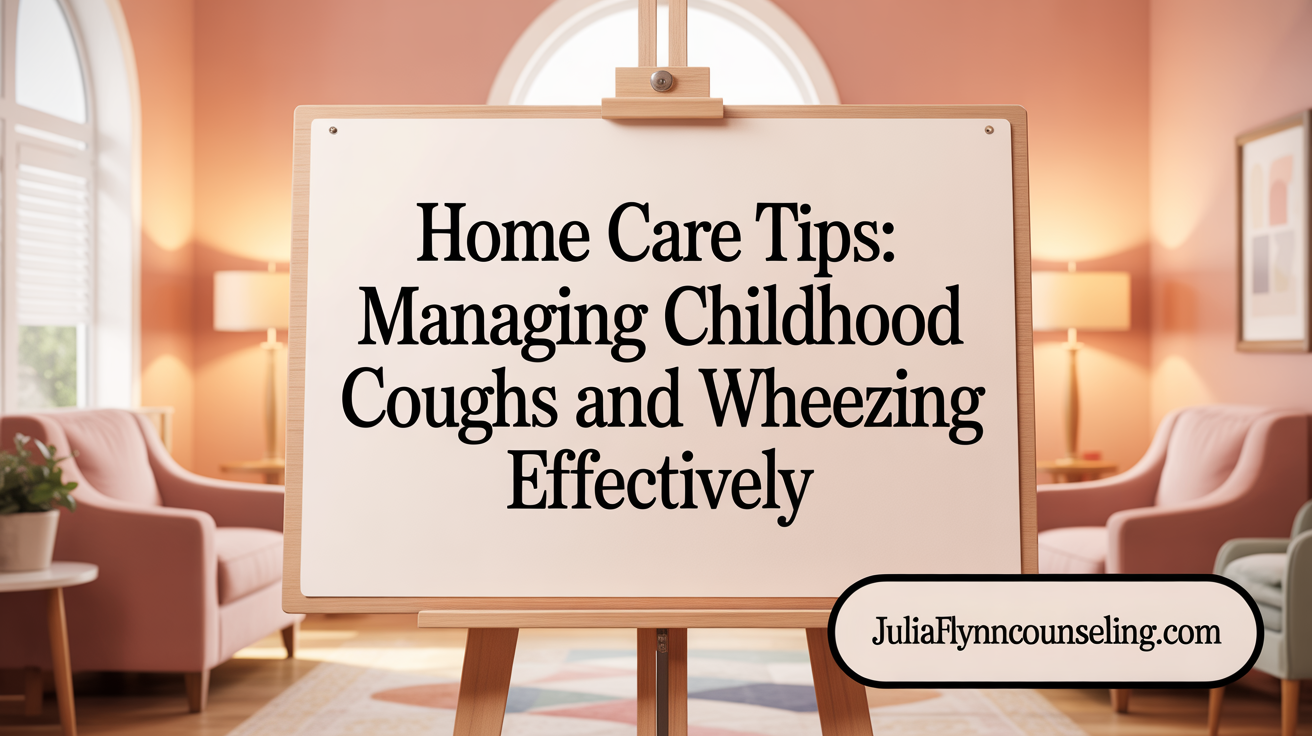
How can parents manage coughing and wheezing in their child at home?
Parents can effectively care for children experiencing cough and wheezing by implementing simple, safe practices. First, it is crucial to avoid exposing the child to tobacco smoke, fumes, and other irritants, which can worsen respiratory symptoms. Using a humidifier or vaporizer to add moisture to the air can soothe inflamed tissues and ease breathing difficulties. Saline nasal drops or sprays help loosen mucus, making it easier for children to breathe and sleep comfortably.
Encouraging warm fluids such as water, herbal teas, or soups can soothe the throat and help thin mucus. Maintaining good hydration supports recovery and prevents dehydration, especially if the child has a fever. For children over 12 months, honey can help reduce cough severity and duration. However, honey should never be given to children under one year due to the risk of botulism.
Monitoring your child's symptoms closely is essential. Watch for signs such as persistent wheezing, difficulty in breathing, bluish lips or face, or if the cough worsens or lasts more than a few weeks. In such cases, seek urgent medical advice. Creating an action plan with your child's healthcare provider for managing asthma or recurrent respiratory issues ensures better control and timely intervention.
Overall, restricting allergens, maintaining humidified air, hydrating well, and using safe home remedies can significantly alleviate discomfort. Regular consultation with healthcare providers helps tailor the management plan, especially for children with underlying conditions like asthma.
Medical Treatments and Interventions for Wheezing and Cough
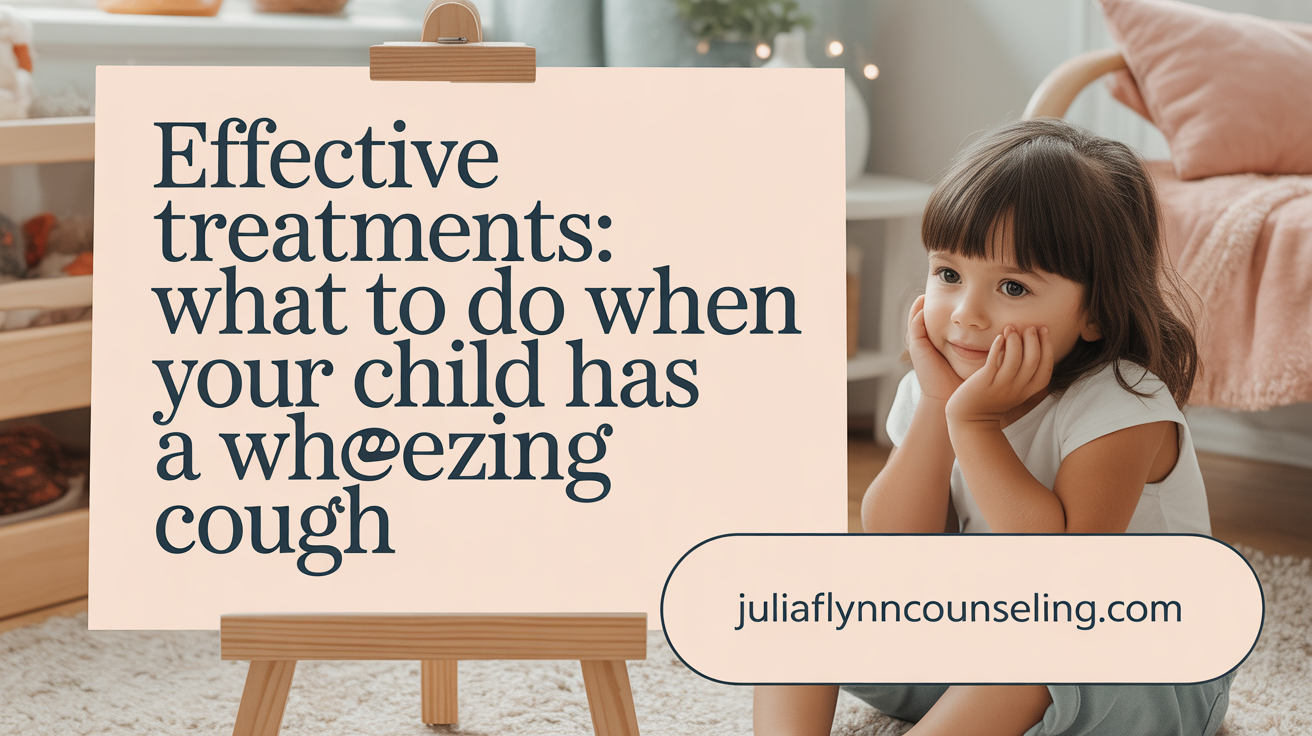
What treatments are recommended for a child with a wheezing cough?
Managing a child's wheezing or cough effectively involves several supportive and targeted treatments. Most mild cases can be managed at home with simple measures. These include maintaining adequate hydration by offering frequent drinks, which helps loosen mucus and soothe irritated airways. Using a humidifier or warm mist inhalation can also help ease breathing difficulties and reduce airway swelling.
Avoiding environmental irritants such as cigarette smoke is crucial, as smoke exposure can worsen symptoms and prolong illness. For babies older than 12 months, honey may be used to alleviate cough symptoms, thanks to its soothing properties.
Children experiencing asthma-related wheezing often require inhaled medications. Short-acting bronchodilators like albuterol, administered via inhalers with spacers or nebulizers, rapidly open the airways and relieve wheezing and breathlessness. For persistent or severe cases, healthcare providers might prescribe additional controllers such as inhaled corticosteroids or leukotriene modifiers.
In cases where breathing becomes difficult, or if other warning signs of severe illness appear—such as bluish lips, persistent difficulty breathing, or lack of responsiveness—immediate medical attention is necessary.
It's important to note that antibiotics do not work against viral infections like bronchiolitis or viral wheeze, and over-the-counter cough medicines are generally not recommended for young children unless specifically advised by a healthcare professional. Always seek professional evaluation to confirm the diagnosis and receive tailored treatment plans.
These interventions, combined with regular monitoring and trigger avoidance, form the cornerstone of effective management for children with wheezing and cough. Proper administration of inhalers and devices, along with caregiver education, greatly enhances treatment success and helps prevent exacerbations.
Prevention and Promotion of Respiratory Health in Children
How can parents prevent respiratory illnesses and promote respiratory health in children?
Preventing respiratory illnesses in children involves several effective strategies. Firstly, consistent hand hygiene plays a crucial role; parents should encourage children to wash their hands frequently with soap and water, especially before meals and after playing outside.
Respiratory etiquette, such as covering coughs and sneezes with a tissue or elbow, helps reduce the spread of viruses and bacteria. Keeping vaccinations up to date, including the flu shot and pertussis vaccine, provides vital protection against serious respiratory infections.
Maintaining a clean and smoke-free environment is essential. Avoiding exposure to cigarette smoke, including secondhand smoke, minimizes airway irritation and future respiratory problems. Ensuring good ventilation in the home and workplace, along with regular cleaning of surfaces, reduces contact with germs.
Parents should also be vigilant about avoiding triggers and pollutants such as dust, pet dander, pollen, and mold, which can worsen conditions like asthma or cause allergic reactions. Using air purifiers and keeping windows closed during high pollen seasons can help.
Regular health check-ups allow early detection of respiratory issues and enable timely intervention. If children show symptoms of respiratory distress, prompt consultation with healthcare providers is vital. This comprehensive approach helps build resilient respiratory health, preventing illness and promoting overall well-being.
Summary and Final Advice
Coughing and wheezing are common in children and often stem from viral infections or allergies. Recognizing the causes and symptoms helps parents manage these issues effectively at home and know when to seek medical attention. Serious signs such as difficulty breathing, persistent wheezing, or cyanosis require prompt evaluation. Supportive home care combined with medical treatments can greatly improve outcomes. Prevention through good hygiene, vaccination, and avoiding triggers is key to promoting respiratory health. Careful observation and partnership with healthcare providers empower parents to protect their child's breathing and overall well-being.
References
- Coughing and wheezing in children | Better Health Channel
- Coughing | Nemours KidsHealth
- Childhood asthma - Symptoms & causes - Mayo Clinic
- Wheezing Symptoms In Kids | St. Louis Children's Hospital
- Cough or difficulty in breathing - Pocket Book of Hospital ... - NCBI
- Cough | Boston Children's Hospital
- Bronchiolitis-RSV - Seattle Children's Hospital
- Treating asthma in children under 5 - Mayo Clinic
- Types of Coughs in Kids | Children's Hospital Colorado
- Coughing Child? 3 Coughs to Know - UnityPoint Health
